| B. Billingham Limited, on the
corner of Birmingham Road, and Cartwright Street,
Wolverhampton was one of the town’s most well known car
dealers. The company became the town’s main Ford dealer,
and had a large modern showroom, and well equipped workshops.
Benjamin Billingham began his career as an apprentice
at Robert Stroud & Company, Niphon Works, Lower Villiers
Street, Wolverhampton. After four years he realised that
it was not for him, he was more interested in mechanics,
and vehicles in particular.
In 1900 when he was just 22 years old, his
opportunity came when he joined forces with his brother,
and opened a cycle shop at 430 and 431 Dudley Road,
under the name of Billingham Brothers. They repaired
cycles in a workshop at the rear of the premises, and
stocked a wide range of parts and accessories.
Unfortunately the partnership was short-lived. Ben's
brother decided to return to the shoe industry at
Netherton in which Ben's other seven brothers, and
sister were actively engaged. Undaunted, Ben decided to
carry on alone.
|
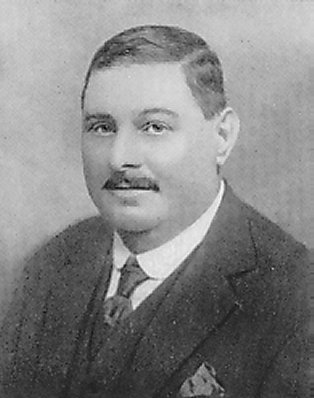
Benjamin Billingham, the company's
founder. |
| The business was a great success. Ben stocked a vast
range of parts, carried out all kinds or repairs, and
built bicycles to order. He stocked many of the well
known cycles of the day, and in his spare time visited
cycle race meetings. Ben's wife Adelaide opened a
draper's shop next door in Dudley Road which also became
a thriving business, which she managed to run at the
same time as rearing a family. Ben was ambitious and
worked hard. In 1905 he began to sell
motorcycles, and motorcycle accessories, and in 1910 the
product range was extended to include cars, and cars
spares. By this time he had about a dozen staff, and became one of Britain's first Ford agents.
|

The original premises.
| The venture was a great success,
and larger premises were soon required. The company
acquired an old building on Snow Hill, which was
adapted, and modernised exclusively for the sale and
service of Ford vehicles.
The new showroom opened in
1913, but the first few years were extremely difficult
due to the First World War. Ben Billingham and his staff
managed to keep the business going, but times were very
hard. After the armistice in 1918, Ben lost no time in
expanding the business. Billinghams became one of the first firms in the country
to launch a Ford tractor supply and service scheme, in
which they demonstrated tractors on the farmer’s own
land, achieving early on-the-spot sales. |
|
In 1921, Mr. L. R. Guy, Ben
Billingham’s son-in-law, joined the company as General
Manager. He was 22 years old at the time, and would eventually become company chairman.
The Guy name has often caused confusion because of local
vehicle manufacturer Guy Motors Limited. Mr. L. R. Guy
was not related to Sydney Guy (who owned and ran Guy
Motors), and had no connection with the company.
Mr. L. R. Guy joined Billingham's
after marrying Ben's daughter Adelaide. His other
brother, Mr. J. W. Guy married Ben's other daughter,
Kathleen. The Guy brothers were the sons of Mr. A. J.
Guy, the Midland Refreshments contractor.
|
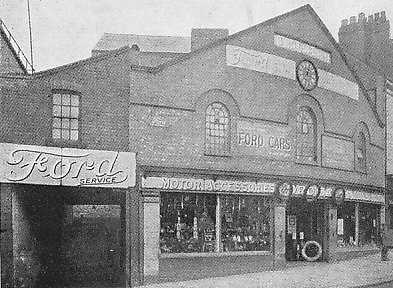
The showroom on Snow Hill. |
|
Success continued, and Billingham's
soon outgrew the Snow Hill site. In 1922 a separate
service department opened in Cleveland Street, and in
1923 the Snow Hill premises was completely redesigned
with large modern showrooms. The company then
concentrated on sales only.
The 1920s were busy times. Thanks
to mass production, car prices had started to fall. For
the first time the ordinary man in the street could
afford to buy a car, and so there was great interest in Billingham's and the latest Ford designs. The motoring
craze had arrived, and Billingham's were busier than
ever.
They carried out all kinds of
stunts and gimmicks to attract new customers.
Billingham's became well known for their novel,
eye-catching window displays, which were often designed
and executed by Ben himself. |
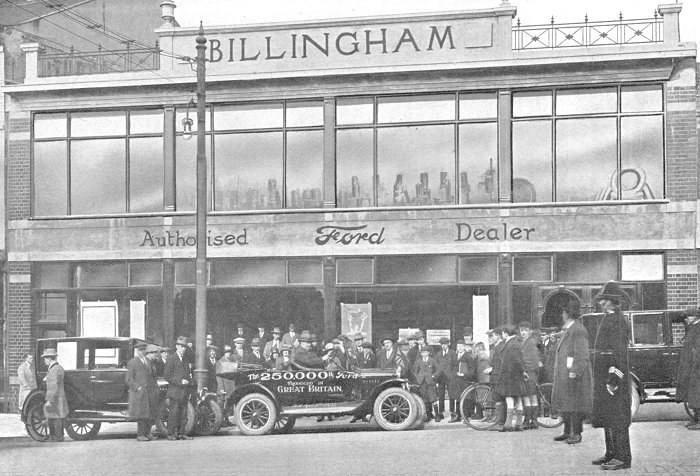
Displaying the 250,000th Ford car that was
built in Britain, outside the Snow Hill showroom in 1925.
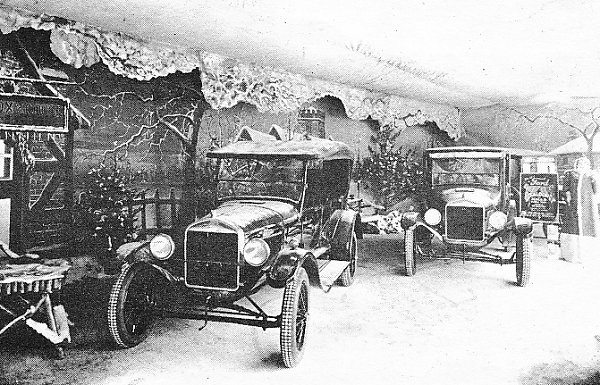
The Christmas 1926 display which
won the Ford Cup, the first window display to do so.
|
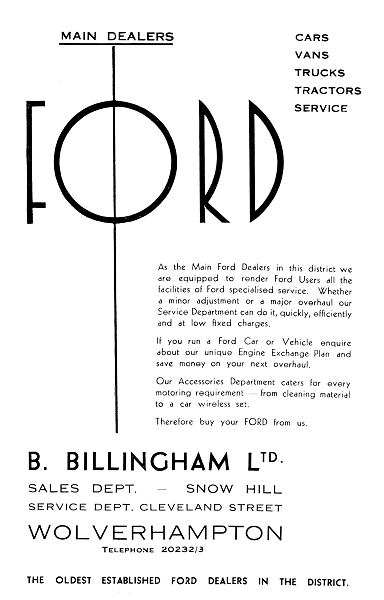
An advert from 1936. |
Ben was forthright, honest, and not afraid to speak
his mind, which could easily turn would-be friends into
enemies. He enjoyed a challenge, and could turn his hand
to almost anything. He sometimes joined the artistes on
stage at the Hippodrome where he assisted with a
conjuring act. He was an expert fisherman and had many
of his larger catches stuffed, and displayed as
trophies. In the late 1920s he worked tirelessly at
Snow Hill, but the heavy workload took its toll. He died
in 1931 at the early age of 53, having just completed 21
years as a Ford dealer. After his death a private company was formed, with Mr. L.
R. Guy as Chairman and Joint Managing Director, and his
brother Mr. J. W. Guy as Joint Managing Director and
Company Secretary. |
|
Their wives, Ben Billingham’s
daughters, Adelaide, and Kathleen, joined them on the
Board. The firm continued to prosper, and
in 1937 a car accessories department opened in Cleveland
Street, next door to the service department. By the 1930s Mr. L. R. Guy had
become a local councillor and took an active part in the
civic life of the borough. In 1934 he inaugurated the
town's first blood transfusion service, which was
attached to the Royal Hospital. In those days
transfusions were given directly from donor to patient.
During the Second World War the
company concentrated on vital war work which consisted
of building and testing Ford V8 engines.
|

The procession to mark the Silver
Jubilee celebrations in 1935, on its way to West Park.
The cars were on loan from Billingham's. |
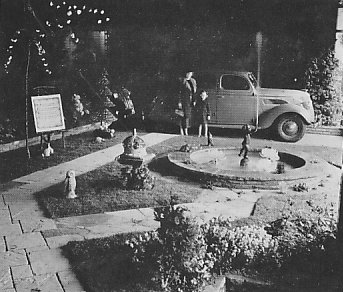
The window display for the
coronation of George VI in 1937. |
The Snow Hill showrooms became the
packing department, and the service department dealt
with all types of government vehicles, at a time when
spares were in short supply, and ‘make do and mend’ was
the order of the day. The Guy family did their full
share of extra work, and still found time to participate
in voluntary wartime duties.Councillor Guy was responsible for
the Borough A. R. P. Transport Service (later the Civil
Defence), and the vehicles that carried the emergency
feeding teams to Coventry during the air raids.
He also organised wartime school
meals, and the volunteer transport which served military
personnel who were on leave from the forces.
|
|
Between 1940 and
1945 more than 10,000 V8 engines were built and tested
by the firm. This was made possible thanks to newly
recruited unskilled workers, who had to undergo
intensive training in the shortest possible time.
By the mid 1940s there were large
numbers of commercial vehicles in everyday use, so in
1947 Billingham's decided to open a new service department in
Bell Street, solely for heavy commercial vehicles.
|
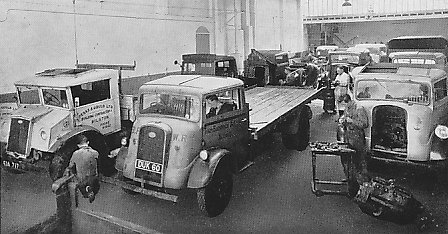
The heavy commercial vehicle
servicing department in Bell Street. |
|
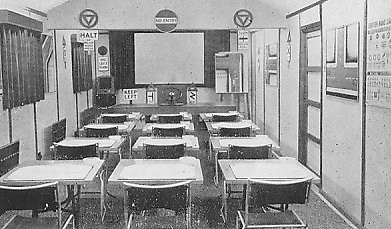
The driving school lecture room. |
Councillor Guy was elected Mayor in
1950 to 51, Deputy Mayor in 1951 to 52, and appointed as
an Alderman in 1960.
In 1953, Mr. Guy’s two sons, Mr. L.
R. Guy junior, and Mr. G. A. Guy joined the company,
after completing engineering apprenticeships, and
gaining much valuable technical experience. In 1960 Mr.
G. A. Guy followed in his father's footsteps when he
became a councillor.
|
|
In 1954 expansion continued with
the opening of a ‘while you wait’ service department in Newhampton Road.
The company also ran the Billingham Modern Motoring
School, believed to be the first driving school in the
country to be opened by a car distributor. By the 1960s
the school had fifteen R.A.C. certified instructors. The
firm even had its own hire purchase finance company
which operated solely for the convenience of its
customers. |

The driving school model room. |
|
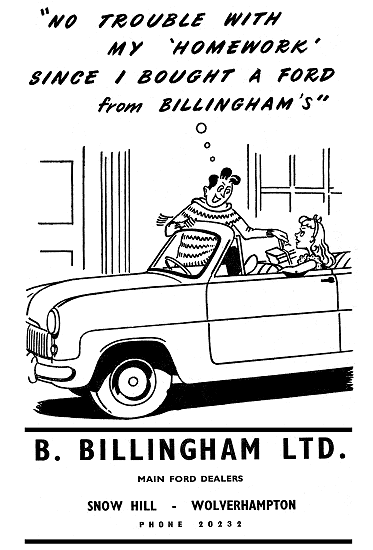
An advert from 1953. |
In 1956 a storage depot for new vehicles opened in
Colliery Road, which was later turned into a showroom and
depot for the sale of used cars.
The following year saw further expansion in Cleveland Street when Billingham's acquired an old printing works next to the
company’s premises. This enabled the parts and
accessories department to be joined to the passenger car
repair section, and the opening of an office block.
The 1950s ended with the
acquisition of an old factory and land in Cartwright
Street, next to a piece of land in Birmingham Road,
already owned by the company. It had been acquired for
future development. |
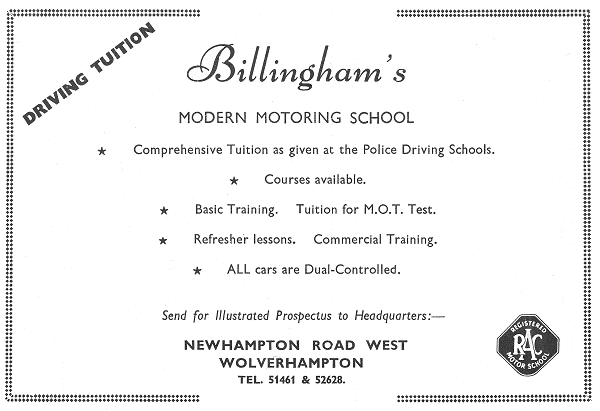
An advert from 1954.
|
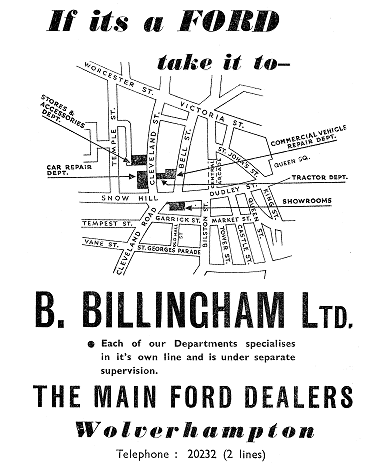
An advert from 1951. |
In 1960 Mr. and Mrs. J. W. Guy
retired, after 29 years as directors of the company.
On
their retirement, Mr. L. R. Guy junior, and Mr. G. A.
Guy were appointed joint Managing Directors, and Mr. W.
R. Allmark, who had been with the company since 1929 was
appointed Director and Company Secretary.
Also in that
year the company’s capital was increased to £100,000.
By the mid 1960s plans for the
redevelopment of much of the town centre, including Snow
Hill, Cleveland Street, and Bell Street were well
underway.
Billingham's sold the company’s properties in
the town centre, and moved to a new building on
Birmingham Road, which was built on the company’s land
alongside Birmingham Road and Cartwright Street.
|
| The New Ford centre was designed
and built in just 36 weeks, and opened in December 1964.
At the same time, the family members, who were also the
shareholders, increased the company’s capital to
£250,000.
During the construction of the building, the directors buried
a time capsule consisting of a specially made brass box
which contains sales catalogues, coins of the realm,
portraits of the directors, and photographs of the
building under construction. It was buried in June 1964.
By this time the business employed 151 members of
staff. |
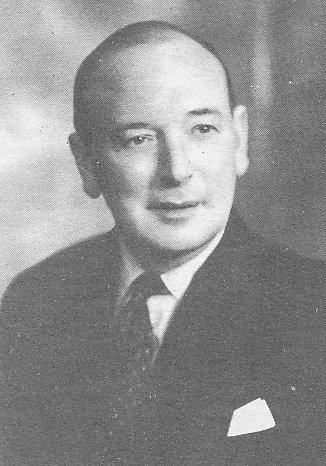
Mr. W. R. Allmark, director and
company secretary. |

The time capsule and its burial.
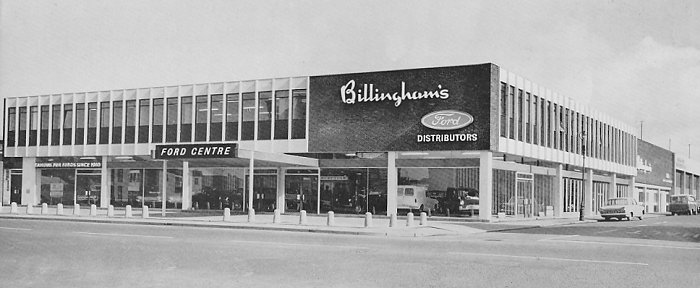
The New Ford Centre.
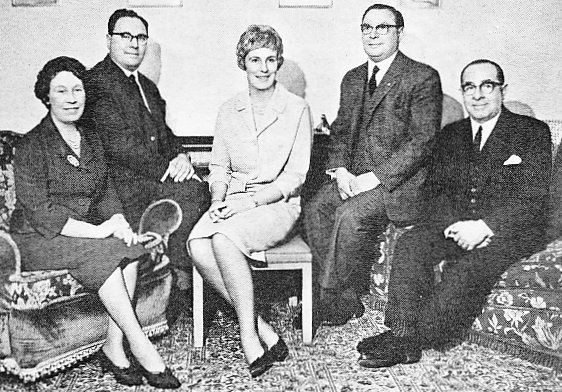
Members of the Guy family who were
company directors. Left to right: Mrs. L. R. Guy, Mr. L.
R. Guy junior, Mrs Anne Frost, Mr. G. A. Guy, and Mr. L.
R. Guy senior. |
|
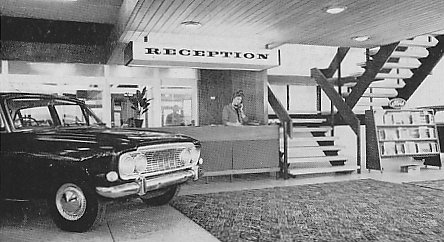
The reception desk in the main
showroom. |
The new building, at the time the
most up-to-date Ford centre in the Midlands, had 4,500
tons of reinforced concrete, 3½ miles of electrical
wiring, 2,800 square feet of glass, and 50,000 bricks.
There was a two tier rooftop car
park which could accommodate 350 cars, and could be
reached directly from the road via two heated ramps,
that were wide enough to take two-way traffic.
|
| On the ground floor could be found the new car sales
department, the used car sales department, spare parts
sales (retail and trade), passenger car repair and
servicing bays, the commercial vehicle repair
department, offices for the sales staff, the staff room,
customer’s waiting room, and the heating plant.
On the first floor were the administrative offices, a
conference room, the directors’ suite, and the vehicle
body part stores. |
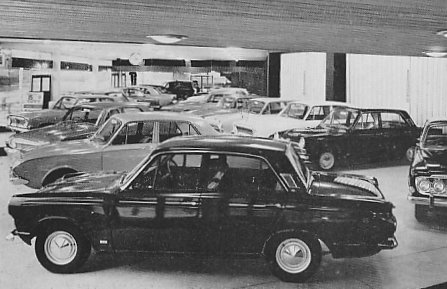
The main showroom. |
|
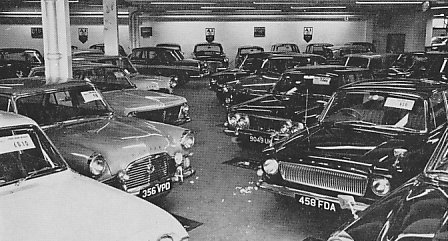
The used car showroom. |
During the late 1960s Billingham's
became part of S. J. & E. (Holdings) Limited.
The
Birmingham Road building is now occupied by Evans Halshaw. |
|
Some of the
service bays. |
 |
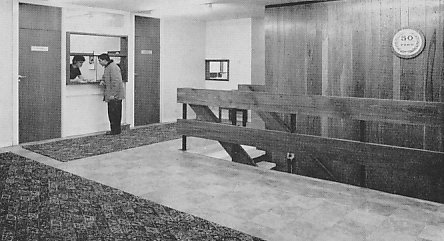 |
The reception foyer for the
administrative offices. |
| The entrance to the commercial
vehicle servicing department. |
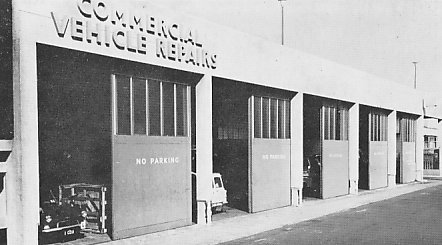 |
 |
The retail spares sales
counter. |
| The pre-delivery checking
department. |
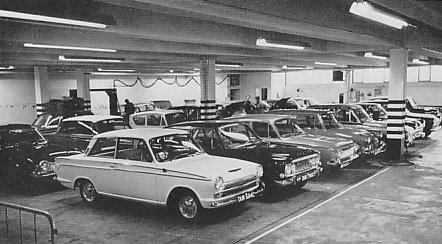 |
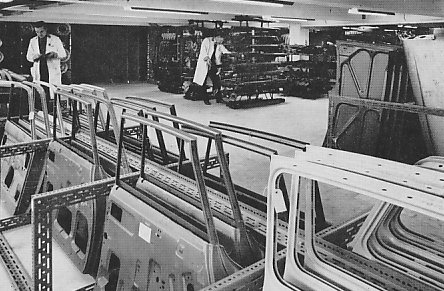 |
The vehicle body parts stores. |
|
The rooftop car
park. |
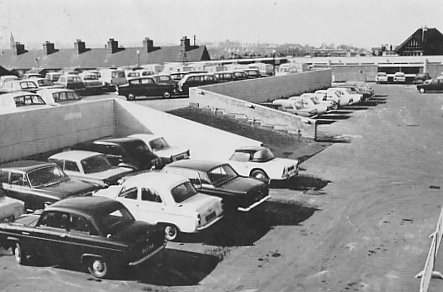 |
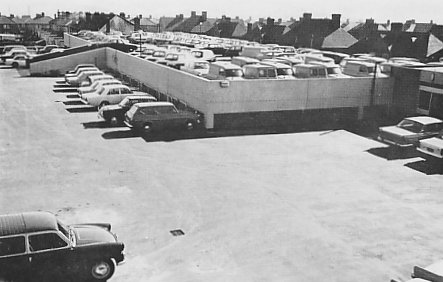 |
The upper level of the car
park. |
| The heated ramp leading from
the road to the car park. |
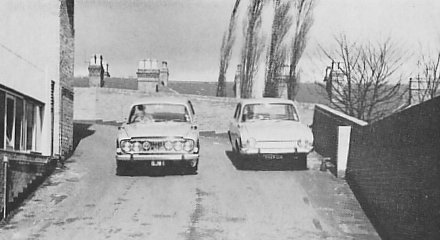 |

A Billingham's letterhead.
| Some of the cars that
were sold by the company |
|
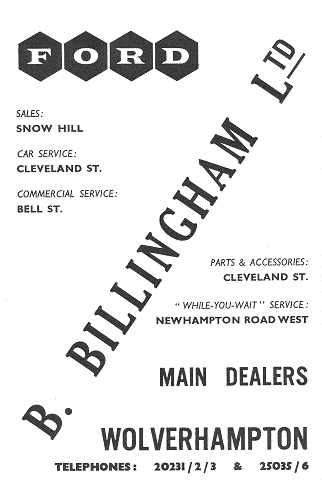
An advert from 1954. |
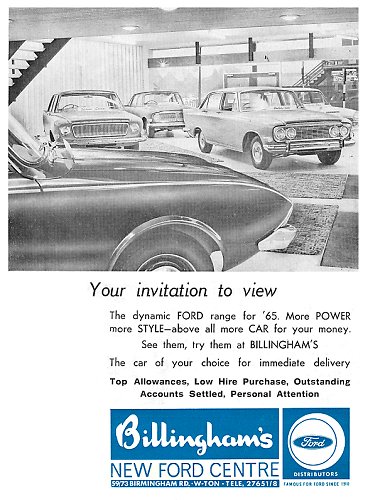
An advert from 1968. |
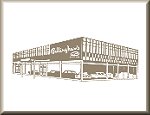 |
Return to
Transport Services |
|